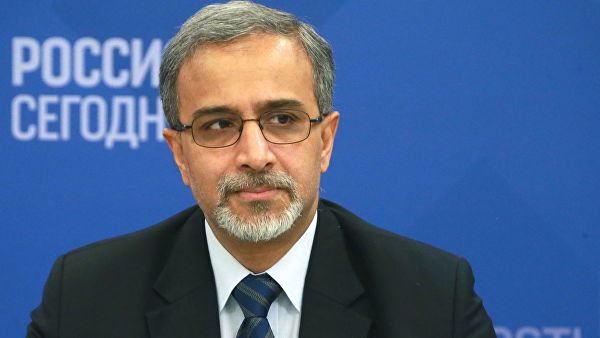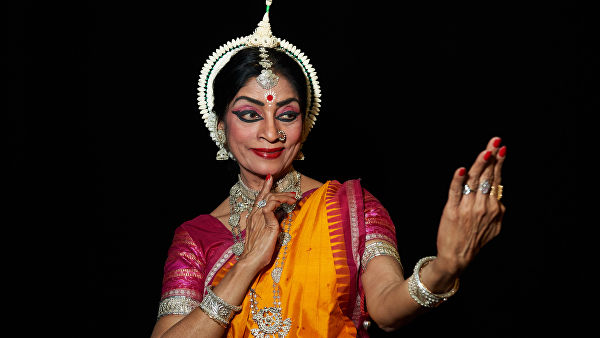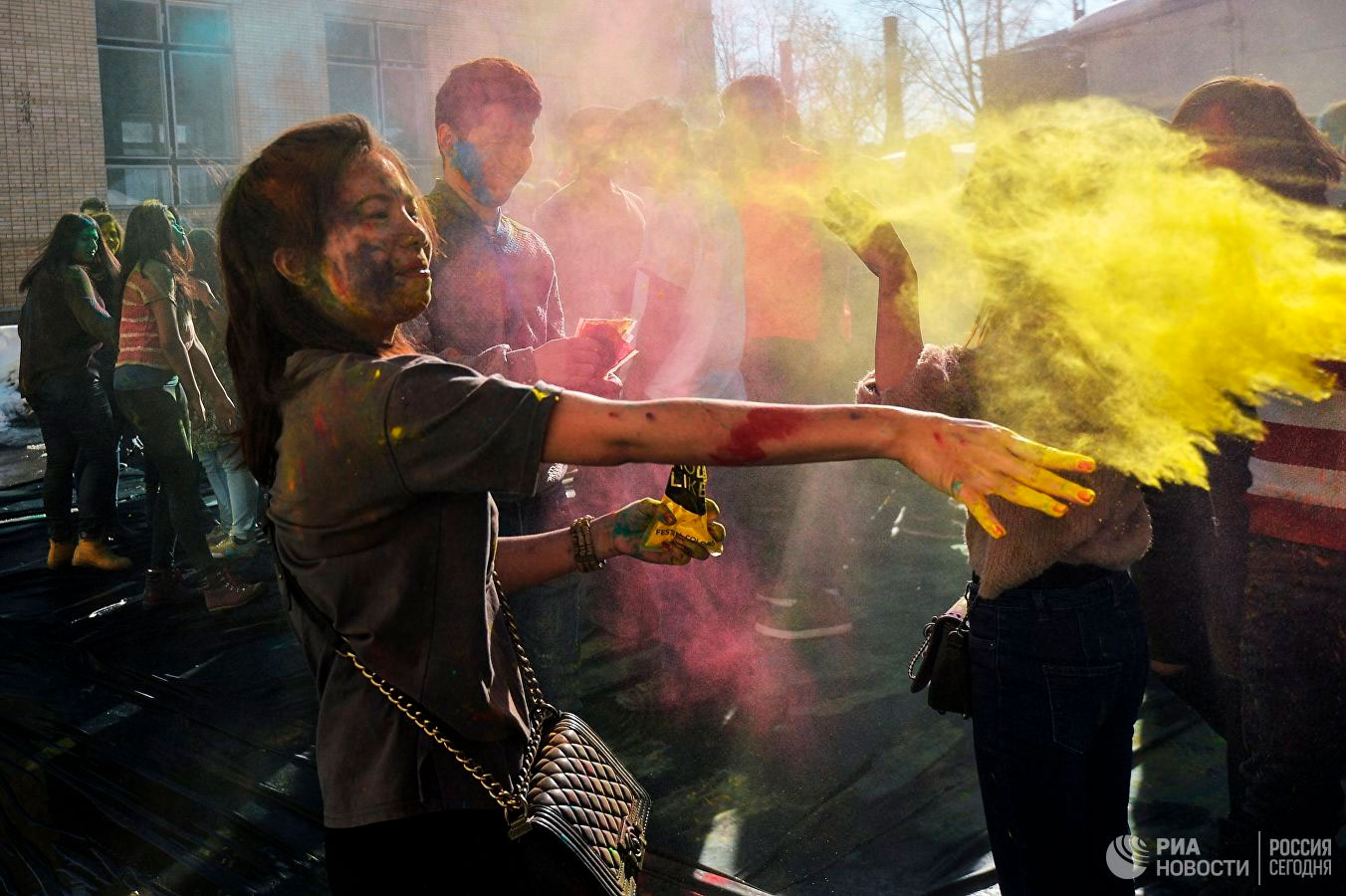
1. The Festival of India in Russia is a bright event with a rich history. What are the main objectives of this cultural celebration?
The history of the Festival of India in Russia, which was first held in Moscow in July 1987, is indeed spectacular. In a rare departure from State Protocol, the Opening of the Festival was organized in the Cathedral Square of the Kremlin. The Festival was such a roaring success and indicated the love and admiration the Russian people had for India and Indian culture, that soon thereafter, the Government of India decided to institute a dedicated Cultural Center in the Embassy, which opened as JNCC in 1989.
After a span of 31 years, The Festival of India in Russia opened in the Kremlin State Palace on 6 September 2018 and it has been a six month long cultural extravaganza with the best of Indian art, music, dance, philosophy and even food carefully curated and presented to our Russian friends. We have taken the Festival to 22 cities, spanning the length and breadth of the country from Vladivostok to Arkhangelsk, from Ufa to Ulan-Ude and from Grozny to Irkutsk. It has been heartwarming to note the reception and hospitality our artists have received wherever they have performed, reinforcing my belief that the Indian and Russian people are connected by ties of love, mutual respect and admiration.
2. The Festival of India 18-19 has covered 22 cities. On what basis were these cities chosen for celebrations? Will they change every year or remain permanent “cultural points” of the Festival?
Over the past several years, the outreach activity undertaken by the Embassy and its officers has increased manifold, and has ensured that our focus has expanded from beyond the traditional centers of Moscow and St. Petersburg. The itinerary for our artists during the Festival of India was a reflection of our expanded footprint in Russia, and we have left virtually no region untouched over the past six months, be it the Russian Far East, Siberia, the Caucuses, the Buddhist Republics and of course our traditional strongholds in Moscow and Petersburg. In addition to using the Festival as an opportunity to take forward our commitment and cooperation with many of the regional governments, we also carefully considered the composite culture of our host city to ensure a certain common thread was present to draw in our audiences. Thus, we took the Exhibition on Buddhism to Elista and Ulan-Ude, and the Sufi artists to Kazan, Ufa, Samara and Grozny. We organized the Food Festival in Moscow and St. Petersburg where the residents were already acquainted with Indian food in a smaller measure and we were then able to introduce to them more authentic flavors of India. There was a lot of thought behind the selection of venues for the Festival of India and I am happy to note that our assessment has been rather on point and the audience response in each of these places has been phenomenal.
 Concert of the Indian dancing group "Geeta Upasana" took place in Moscow
Concert of the Indian dancing group "Geeta Upasana" took place in Moscow
Of course, each time we organize an event of such scale or bring different artists from India to Russia, the aim is to reach new audiences and find avenues for fresh cultural cooperation in unexplored regions, while naturally deepening our existing cooperation with our traditional partners. In a nutshell, that will be the thought process behind our selection for the next round of cultural events.
3. In your opinion, in 2018 which event of the Festival was the most exciting and which one collected the majority of responses from the Russian public?
To be honest that is a tough question to answer because every event under the Festival of India banner has met with such resounding success that singling our just one group is neither fair nor possible. The Opening Ceremony kicked off the Festival with the pomp and show that it deserved at the Kremlin State Palace and every group that has followed since has drawn in the same level of enthusiasm and appreciation. I think what we managed to achieve was bring in some fresh themes such as Buddhism and the teachings of Mahatma Gandhi, which are as symbolic of India as Indian dance and music, which have always been popular in Russia.
4. By what principle are themes selected for exhibitions and Indian artists are invited?
While selecting the categories of performances and the artists that would perform in Russia, we try to ensure there is a balance between the conventionally popular performances such as Kathak, Bollywood etc and the less popular but equally beautiful traditional art forms that the Russian audience have hitherto been unexposed to. Thus, this time we introduced the audiences in Moscow, St. Petersburg and Arkhangelsk to the Indian instrument ‘Thavel” which most Russians heard for the first time. As it turned out, the audience response to the concert was exceptional. Even for the Closing Ceremony, which will be held on the 31st of March at the Golden Ring Theater in Moscow, we have brought in an exceptionally talented Santoor player from India, Dr. Bipul Kumar Ray, who will perform along with his ensemble. The Santoor is a traditional string instrument native to India and produces a unique melody that I am confident our Russian friends will enjoy.
 Participants of the Holi-Mela festival in the Center of the Indian culture in Moscow
Participants of the Holi-Mela festival in the Center of the Indian culture in Moscow
This year we are celebrating the 150th birth anniversary of Mahatma Gandhi and the Indian government has organized a series of global events to commemorate this landmark occasion in the honor of the Father of the Indian nation. Thus, it was only natural that we decided to include an Exhibition on the teachings of Mahatma Gandhi, which was curated by leading Gandhi scholar Dr. Birad Yajnik, as part of the Festival.
5. What do you think is the difference between the Russian and Indian public?
Its amazing to note how much the people of India and Russia have in common with each other. Both our nations have a rich and ancient civilizational heritage that has flourished over centuries, imbibing and absorbing the best of all religions and cultures, while constantly creating a unique, composite culture of its own. Hence, both our people have traditionally possessed an affinity and appreciation for art and beauty. I find that the Russian audiences have welcomed the Indian artists with such warmth and respect, and that love and affection unites the Russian and Indian public.
6. Thanks to the Festival, many Russians have started showing greater interest in the Indian culture and began to prefer this country for recreation. Has the flow of tourists from Russia to your country changed over the past three years?
It is heartening to note that the two way flow of tourism between India and Russia is on the upswing and showing positive trends over the past few years. It is important that through our outreach and information campaigns we are able to inform the Russian tourists of the plethora of destinations that India has to offer beyond the traditional favorites such as Goa and Kerala.

 Concert of the Indian dancing group "Geeta Upasana" took place in Moscow
Concert of the Indian dancing group "Geeta Upasana" took place in Moscow  Participants of the Holi-Mela festival in the Center of the Indian culture in Moscow
Participants of the Holi-Mela festival in the Center of the Indian culture in Moscow